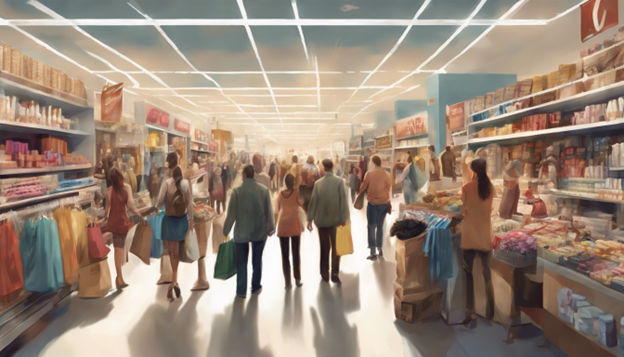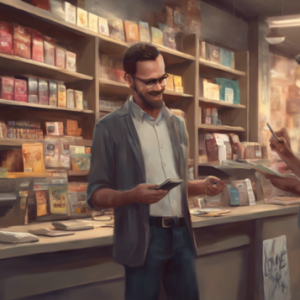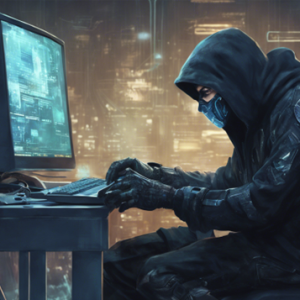The Power of Brand Marketing
Highly effective loyalty programs know the importance of brand marketing. They use it to capture the hearts of customers and create lifelong loyalists. So, how can brand marketing improve your loyalty program?
Brand marketing is the process of creating a consistent and compelling experience that resonates with customers and encourages them to engage with and remain loyal to the brand.
Companies that employ compelling storytelling in their marketing strategies connect with customers on a deeper level – reaching beyond mere transactional relationships. It’s not just about transactions. It’s about making a connection. Emotionally engaging experiences encourage customers to share their experiences and keep coming back for more.
Understanding the Relationship Between Branding and Customer Loyalty
Branding and loyalty go hand in hand. If a business can build a strong brand, it can create deep, lifelong loyalty. Brands such as Apple, Nike and Mattel have established strong brands over the years and now reap the rewards of robust customer loyalty.
A study by the Harvard Business Review shows that emotionally engaged customers are typically three times more likely to recommend a product and repurchase it themselves. This indicates the critical role brand marketing plays in generating long-lasting customer loyalty [1].
Innately, customers gravitate towards brands that resonate with their identities or beliefs. This understanding underpins the significance of embedding a brand’s values into its loyalty programs. By incorporating brand values into reward structures, businesses are not only incentivizing customer loyalty but are also promoting deeper brand engagement.
Innovating to Cultivate Brand Loyalty
Branding is not only about creating an image, but also about delivering on a promise. When designing a loyalty program, try to ensure the brand promise aligns with the program’s rewards and offerings. Focus on meaningful engagement, not just transactions. Consider experiences, not just rewards.
Personalization and prediction are data-driven insights that can personalize offers, creating a sense of exclusivity. Forward-thinking brands will anticipate consumer needs before they even arise.
Also, your loyalty program should leverage technology to take brand narratives to the next level. Cultivate deeper brand loyalty by providing experiences that excite and entice customers. Augmented reality and virtual reality can enhance these customer experiences. Consider investing in interactive platforms that surprise customers with fun and fresh experiences. This is especially valuable for businesses in industries that have less customer passion. Meeting customer expectations is essential, exceeding them is even better.
Brand Storytelling: How Does Emotion Impact Loyalty?
In brand marketing, emotional connections stimulate loyalty. It is through such storytelling that brands involve customers, deepening their loyalty in return. For example, Nike’s success blossomed by telling meaningful stories of perseverance and accomplishment.
Apple also has an emotional story that integrates innovation and change, bringing about positive customer emotions and, subsequently, loyalty. According to MarketWatch, Apple users’ brand loyalty rate was a whopping 92% in 2020 [2]. Apple has consistently increased its market share year after year.
However, not all brands have succeeded in their storytelling ventures.
Case Study: Peloton
One recent example of a brand that faced challenges in earning customer loyalty through brand storytelling is Peloton. Peloton is a fitness company known for its high-end stationary bikes and interactive fitness classes. While the company has a devoted customer base, it also experienced a notable setback in late 2020.
The Controversy: In late 2020, Peloton released a holiday commercial that received significant backlash. The commercial depicted a husband gifting his wife a Peloton bike for Christmas, which was perceived by some viewers as tone-deaf and promoting unhealthy body image and marital dynamics. Critics argued that the ad was out of touch with the realities of many people’s lives, particularly during the COVID-19 pandemic.
The Fallout: The backlash against the ad was swift and widespread, with many consumers expressing dissatisfaction on social media and through various media outlets. The negative attention overshadowed the company’s efforts to promote its products and services during the holiday season.
Brand Response: Peloton responded to the controversy by defending the ad, stating that it was meant to celebrate personal achievements and fitness journeys. However, the brand’s initial response did little to quell the criticism.
Impact on Loyalty: While Peloton already had a dedicated customer base, the controversy and negative publicity raised questions about its brand messaging and its ability to connect with a broader audience. Some potential customers were put off by the controversy, and it temporarily clouded the brand’s storytelling efforts.
Lesson Learned: The Peloton case serves as a reminder that brand storytelling needs to be sensitive to the prevailing cultural and societal context. What might have seemed like an innocuous holiday commercial to the company was interpreted differently by consumers. The incident underscores the importance of not only telling a compelling brand story, but also ensuring that it resonates positively with a diverse audience [3]. Perhaps message testing with customers and public relations could have identified this issue before it became widespread.
It’s worth noting that Peloton has continued its marketing efforts and remains a successful brand in the fitness industry, but the controversy serves as a recent example of how brand storytelling can have unintended consequences on customer loyalty when not handled carefully.
As these examples underscore, brands that execute compelling storytelling stimulate increased market share and ROI. Strategic brand storytelling creates an emotional connection with customers, driving loyalty and, in turn, company success.
Rewarding Representation: Leveraging User-Generated Content for Brand Advocacy
In this digital age, user-generated content (UGC) is instrumental for brands. UGC ranges from customer reviews to social media content building brand credibility and serving as testimonials. Strategic and cost-effective, user-generated content attracts more consumer trust and attention than brand advertising.
An effective tactic is incentivizing customers to generate this type of content. This act alone can drive customer engagement and promote brand loyalty. Several brands have successfully leveraged UGC on TikTok and other social platforms to engage with their audience and increase brand visibility [4]. Here are several examples:
Ocean Spray – #DreamsChallenge:
- In 2020, a TikTok user named Nathan Apodaca posted a video of himself skateboarding while drinking Ocean Spray cranberry juice and listening to Fleetwood Mac’s “Dreams.” The video went viral, inspiring thousands of users to create their own versions of the video.
- Ocean Spray capitalized on this UGC trend by creating its version of the video featuring the company’s CEO. They also gifted Nathan Apodaca a new truck filled with Ocean Spray products.
- The #DreamsChallenge became a global sensation and significantly boosted Ocean Spray’s brand recognition and positive sentiment [5].
e.l.f. Cosmetics – #EyesLipsFace Challenge:
- Makeup brand e.l.f. Cosmetics launched the #EyesLipsFace challenge on TikTok, encouraging users to create short, music-backed videos showcasing their makeup transformations.
- The challenge quickly gained traction, with millions of user-generated videos using the hashtag. e.l.f. Cosmetics saw a surge in brand engagement and visibility among a younger demographic [6]
Fabletics – #MoveInFabletics Challenge:
- Activewear brand Fabletics launched the #MoveInFabletics challenge to encourage users to share videos of their workouts and fitness routines while wearing Fabletics activewear.
- The challenge not only generated UGC but also reinforced the brand’s association with an active and healthy lifestyle [7].
These are just a few examples of how brands have harnessed the power of UGC to connect with their audience, drive engagement, and increase brand awareness and loyalty. TikTok’s creative and interactive platform has proven to be a fertile ground for innovative marketing campaigns that resonate with younger and digitally savvy consumers.
Companies also harness the influence of celebrity endorsers. They sway public opinion favorably towards the brand. However, the selected influencer must align with the brand’s identity and values.
In this approach, consider market researchers as valuable partners. They provide consumer insights that shape your UGC strategy. Ultimately, to harness the power of brand marketing in loyalty programs, proactive engagement with customers is key.
Summary: Maximizing The Impact of Brand Marketing in Loyalty Programs
Powerful branding greatly enhances the effectiveness of customer loyalty programs.
Cultivating loyalty involves curating innovative ideas that work for your brand. More than mere transactional exchanges, innovative reward structures offer engaging experiences customers will likely enjoy and share.
User-generated content proves instrumental in brand advocacy. Advocates, intrinsically driven by their loyalty, become brand ambassadors. Their word-of-mouth marketing fortifies the brand’s presence.
In conclusion, brand marketing can significantly boost loyalty programs. It is a remarkable tool companies can leverage to increase customer loyalty.
References:
[1] “The New Science of Customer Emotions.” Harvard Business Review, November https://hbr.org/2015/11/the-new-science-of-customer-emotions
[2] How high is the brand awareness of Apple in the United States? https://www.statista.com/forecasts/1335456/apple-wearables-brand-profile-in-the-united-states
[3] Peloton Ad Is Criticized as Sexist and Dystopian
https://www.nytimes.com/2019/12/03/business/peloton-bike-ad-stock.html
[4] 11 Smart Ways Marketers Can Leverage User-Generated Content – https://www.forbes.com/sites/forbescommunicationscouncil/2022/10/11/11-smart-ways-marketers-can-leverage-user-generated-content/
[5] Doggface gives the world a smile with juice, a skateboard, and all the vibes
https://newsroom.tiktok.com/en-us/doggface-gives-the-world-a-smile-with-juice-a-skateboard-and-all-the-vibes
[6] e.l.f. Cosmetics
https://www.tiktok.com/business/en-US/inspiration/e.l.f.-cosmetics-567
[7] Fabletics
https://www.tiktok.com/business/en-US/inspiration/fabletics-301















